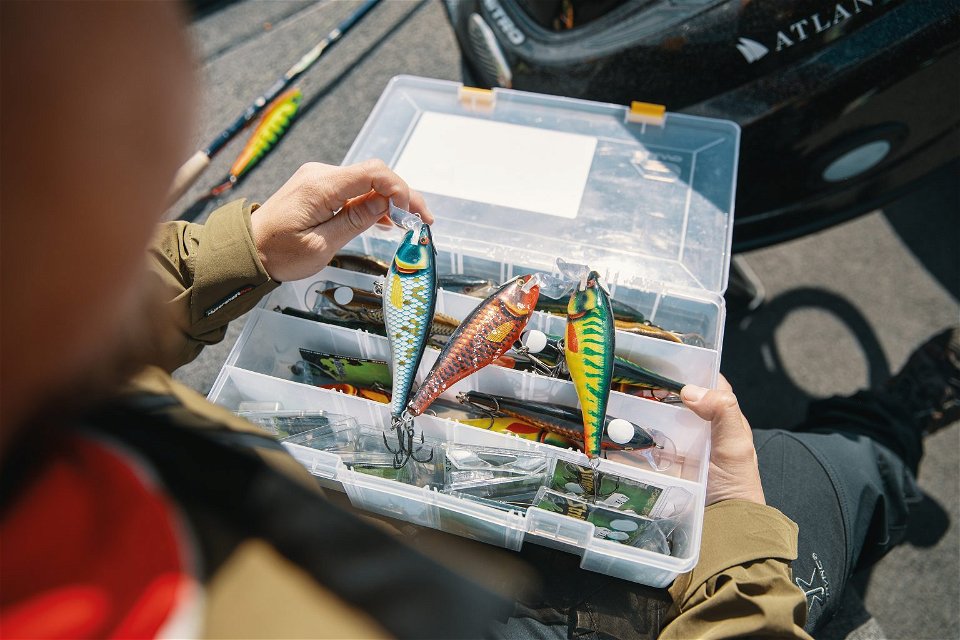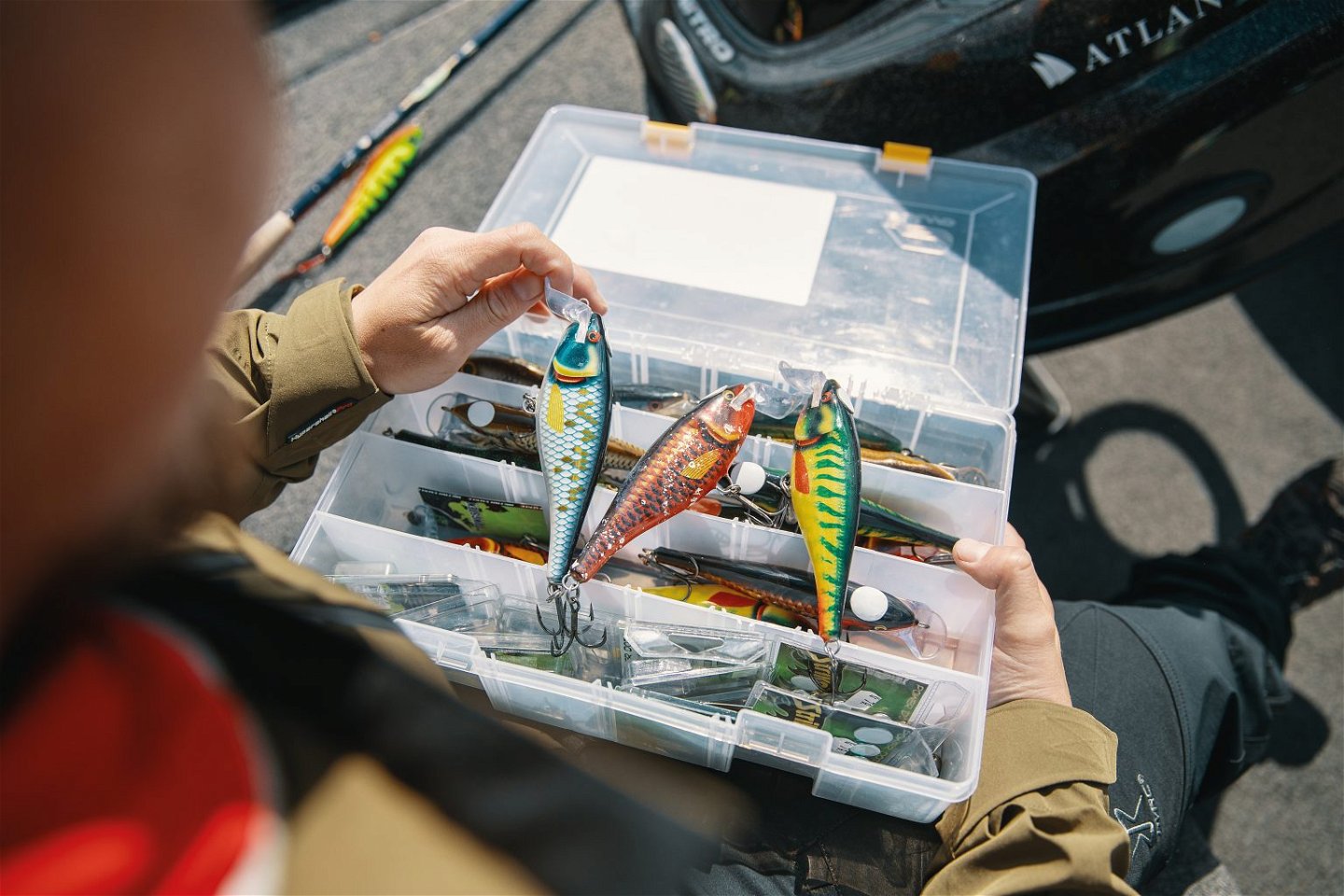Learn more about spin fishing for pike
Images
Spin fishing for pike!
The pike is by far one of the most popular predatory fish that we have
in Sweden, and it’s easy to understand why. Its powerful bite comes without warning,
followed by a struggle, with quick runs and long pulls that cause some alarming bends in the rod.
But what should you do to outwit the pike and get it to bite?
Spin fishing for pike is fun and incredibly effective! Targeted
pike fishing requires a fishing rod, ideally with a casting weight of 40–130 g. A casting weight of 40–130
g enables you to fish with most lures on the market. You need a suitable reel for your rod, either a spool reel or a multiplier reel. A multiplier reel in size 300–400 or
a spool reel in size 3000–4000 with good braking power is best. Braided line is a must, as it lasts
considerably longer and is stronger than other lines. The braided line should be around 0.30 mm, because you don’t want to have to throw away expensive lures unnecessarily.
At the far end of the line, tie a fluorocarbon leader of 40–70 cm
to protect the line from pike teeth, stones, and branches, as well as to fasten
the lure to. The leader can be made of either fluorocarbon or titanium. A suitable size
for fluorocarbon is 1.0–1.15 mm. Titanium leaders can be thinner. We strongly recommend that you go to your nearest tackle shop for help in choosing the best equipment for your pike fishing.
Once your equipment is ready, it’s time to start thinking about which lure you’re going to fish with.Essentially, rubber lures can be used for fishing deep or shallow, fast or extremely slow. It’s
up to you how you want to use your lures, depending on the weights
you add, etc. The disadvantage of a rubber lure is that it’s more fragile. Over time
it will break, after catching a number of pike. Hard lures, big
pike wobblers, and jerk/swimbaits are lures made of plastic or wood. These
lures are much more durable and can be used year after year. Hard lures are more difficult than rubber lures to use really deep, so rubber lures are preferable for deep pelagic fishing. Wobblers are
lures that you reel in. A diving bill at the front of the lure
makes it wiggle along like a wounded fish. A jerkbait is a lure which,
using your fishing rod, you can make twitch and dive. The rod is used like a
conductor’s baton, with distinct downwards jerks to make the lure swim
side to side and up and down. Swimbait/crankbait is similar to jerkbait.
These swim side to side or in a clear S-shaped motion. Swimbait is
designed so that the lure will swim just by reeling it in. Swimbait
is often used as jerkbait, too, making it more
versatile.
Where and how you fish for pike depends hugely on the
types of waters you’re fishing in and the season. Try to think like a predatory fish... Where and how would I have the best chance of catching prey? A rule of thumb is
to fish at or around a shoal of bait fish, ideally close to objects such as rocks, logs, or underwater vegetation such as pondweed where pike can hide. Other places are the edges of shallows and steep slopes, i.e. where the depth of the lake changes quickly.
As with all fishing, it’s important to find the right method for the day at hand and try a few different lures from your tackle box. Try both small lures and some larger ones. The pace of the lure is often what matters. In cold waters, it usually works well to fish as
slowly as you can, while in the warmer waters of the summer, a quick-paced
lure can “trick” the pike into biting.
You can find more tips on how to go spin fishing for pike on this page.
Contact
Address
Email address
HittaFiske
Organization logotype




